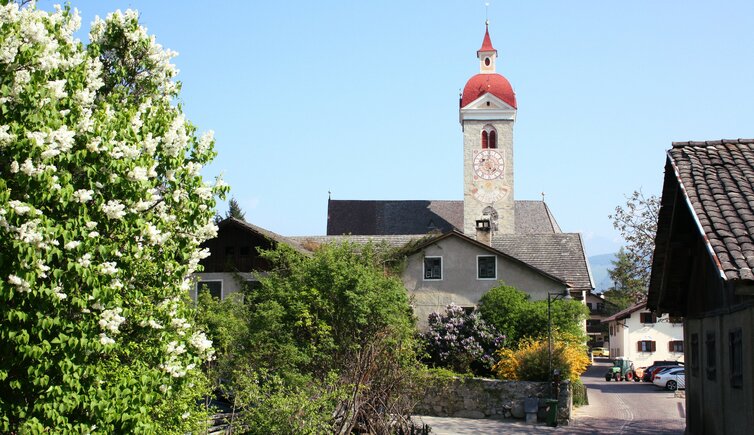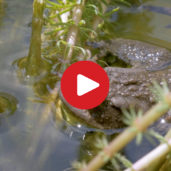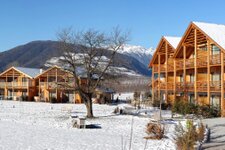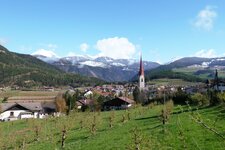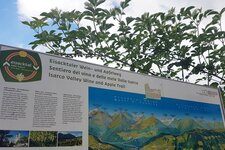Naz, with its apple trees and hiking trails, forms the centre of the municipality: One trail leads into the depths of the Rienza Gorge
The small centre of Naz-Sciaves combines lively daily life with relaxed moments at village festivals or over a coffee in the village square: A bar, a pizzeria, and the library are just a few steps away from the towering Parish Church of Saints Philip and James. Its tower consists of 1,400 granite blocks. The original parish dates back to the Carolingian era, while the current parish church is late Gothic. The high altar is adorned with wooden sculptures from 1470, created under the influence of the renowned artist Michael Pacher. A dense network of hiking trails criss-crosses the plateau.
These include, for example, the village tour around Naz–Sciaves, which passes through three village centres and leads to the most important biotope in Naz-Sciaves (Natz-Schabs). Another route connects four of the five hamlets. The Novacella Abbey in the valley basin, a special place with a museum, monastery garden, and its own winery, is also within walking distance.
Furthermore you can explore the depths of the Rienza Gorge from Naz on trail no. 4, crossing the river via a footbridge to ascend to Rodengo and the mighty Rodengo Castle with its Yvain frescoes. A guided tour in Naz offers the opportunity to visit the private collection of mineral collector Markus Klement: It includes 1,500 minerals originating from Greenland and the Sahara, from caves in Brazil, and from the peaks of the Himalayas and the South Tyrolean Dolomites.
A little-known fact: Since the end of WWII, Naz was home to a US military base where nuclear weapons were stored underground as part of Italy's nuclear sharing agreement as a NATO member. The facility was abandoned in 1991, the soldiers were withdrawn. The site was transferred from the Italian state to the province, which plans to create a recreation area there.
